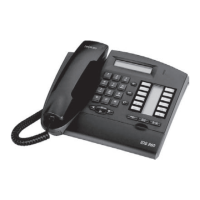1
PROBLEM-SOLVING METHODOLOGYMAINTENANCE
Ed. 04 1/4Réf. 3EH 21000 BSAA
File
PROBLEM-SOLVING METHODOLOGY
This section does not deal with failures caused by configuration errors nor with those caused by errors
in the telephone features.
In either of these cases, refer to the sections on MMC-Station and Telephone Features.
In all cases, a perfect knowledge of the system (architecture, distribution of function processing, etc.)
and of its telephone features is essential, and in particular the limits of these features.
Faults concerning distribution must be eliminated first.
To avoid taking a wrong track when determining faults, it is vital to define the source of the fault from
the outset:
- operating error by the user
- programming error by the user or operator
- programming error in implementation
- genuine system failure
TROUBLESHOOTING PROCEDURE
For any system failure, it is essential to make visual checks (LEDs for the various boards, data testing,
automatic set testing), to check the power supply voltage (mains and battery) and to read the system
messages.
The procedure is as follows:
- locate the terminal(s) affected by the fault. If several terminals are affected by the same fault, de-
termine the common link which might be the cause (logical numbers of the same board, geogra-
phical distribution, same type of programming, etc.)
- determine at what level the faulty feature is occurring (local or external call, etc).
WARNING
NO INTERVENTION IN THE CABINET IS AUTHORIZED FOR THE USER. ONLY THE
INSTALLER OR THEIR REPRESENTATIVE IS AUTHORIZED TO INTERFERE WITH THE
CABINET

